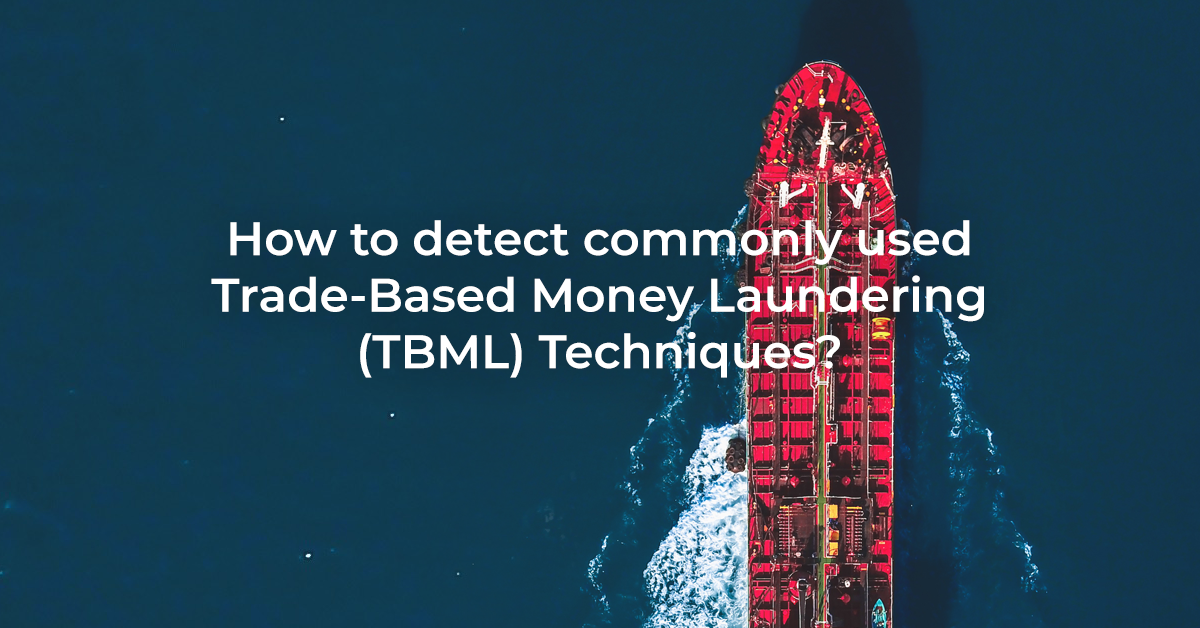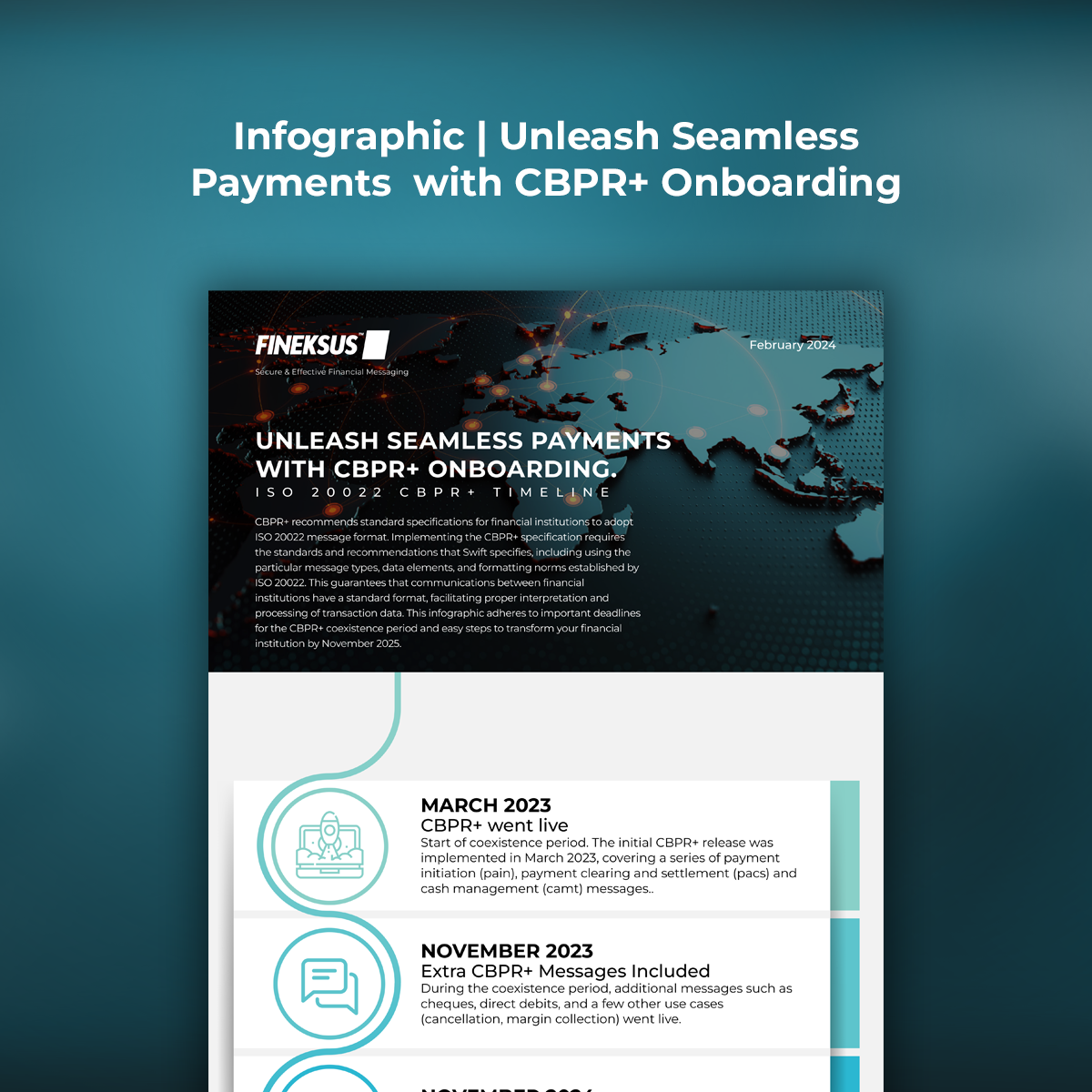
How to detect commonly used Trade-Based Money Laundering (TBML) Techniques?
What does Trade-based Money Laundering (TBML) mean?
Trade-based Money Laundering (TBML) is defined as the use of trade activities and transactions to transfer illicit cash of big quantities into legitimized or -in some cases- less suspicious commodities in order to avoid financial transparency regulations. There are different techniques of using TBML via changing the price, quality or quantity of the goods that are being imported or exported. As an indirect and therefore ideal way of money laundering, TBML has started to be preferred by the money laundering criminals more often.
World Trade Organization (WTO) reports that the average amount of annual global merchandise trade is approximately $20 trillion and about $2 trillion of this amount is laundered money via customs fraud, namely used in TBML.
Why does Trade-based Money Laundering (TMBL) occur?
The lack of regulatory focus and effective disincentives on the Trade-based Money Laundering crimes is one of the reasons why money launderers find it as an attractive method for their criminal activities.
Another reason might be the fact that with the increase in globalization and eventually in the volume and value of world trade, it can be easier for the financial criminals to mask their money laundering crimes within trade-based processes especially in comparison to other money laundering methods that are monitored by strict laws. Regulatory initiatives such as Anti-Money Laundering (AML) and Counter Terrorism Financing (CTF) have played an effective role in the decrease of criminal activities reported in the financial transactions. However, that may have also turned trade into a more appealing channel for money laundering criminals.
High risk countries for Trade-based Money Laundering (TBML)
Free trade zones (FTZs) are listed as more vulnerable to TBML due to the minimum level of regulation applied in trade among those areas. According to the 2010 report of FATF, there are almost 3.000 FTZs in 135 countries and the total amount of exports from FTZs are $400 billion worth. On the other side, easing the trade barriers for the sake of the development of economy has given the financial crime and terrorism a possibility to exploit this liberalization. These zones have become highly attractive for TBML crimes.
Apart from FTZs, countries like Australia and the United States have unrestricted nature of trade among their states. The freedom of domestic state has become risky in terms of TBML which is hard to detect.
Methods that financial criminals use for TMBL activities
The most commonly used trade-based money laundering techniques are:
a) Over-and under-invoicing of the goods and services
This is the oldest and most commonly preferred method of money laundering via trade. By misinterpreting the price of the goods or the services, an extra value can be transferred between the parties of the trade. The exporter sets a lower (than fair market) price for an asset and issues an invoice accordingly so that when the importer sells that asset on the market, the value he receives will be higher. This is called under-invoicing of the goods.
Another option, which is over-invoicing, is to invoice the assets at a price above the regular price so that the exporter can receive more money from the importer.
b) Issuing more than one invoice for same goods and services
Another commonly used TBML method is creating several invoices for the same goods or services and transaction. It makes it possible for the money laundering criminals to legitimize multiple payments for the same shipments. Money launderers can make it even more complicating by using different financial institutions for each payment and additionally, there are a number of legal explanations to justify multiple payments for the same goods or services.
c) Changing the quantity of shipped of goods and services
A similar method to over- and under-pricing of the goods, changing the quantity of the goods is a money laundering method used in trade. By overstating or understating the number of items or services provided (or in some cases, there may be no goods shipped at all), money launderers can find ways to process the payments and launder money.
d) Misinterpretation of goods and services
The quality or type of the goods and services can also be misconceived for the purpose of TBML. When the exported item is a cheap product but it is invoiced as a relatively expensive product, there occurs a discrepancy between the value of what is actually shipped and what is included in the invoice and customs documents.
Trade-Based Money Laundering RED FLAGS
The red-flag indicators or warning signs of TBML do not always mean that there is certainly an illegal activity behind that trade-related transaction; however, they are the indicators that there might be a suspicious transaction and it needs further scrutiny. The challenge is that the bank officers are only capable of dealing with the papers and not the material goods or the services included in the trade activity. At this point, reporting each suspicious activity for the evaluation and investigation becomes critical.
The red flags are mostly related to the discrepancies about the price, description, quantity and quality between the items listed in the invoice and items that are actually sent. There are lots of possible red flag indicators of trade-based money laundering to which the compliance officers need to be familiar with.
In addition to the red flag indicators, the compliance officer must also be eligible in analyzing factors like regular transaction activity of the concerned parties, the features of the traded assets and the nature of transaction, the market value of the traded goods, the importing and exporting locations of the transaction or if there is any fraud or criminal record of the parties involved etc.
Analytics technology that can detect and identify TBML
Financial institutions are entitled to keep the record of all of their transactions and present them as evidence if needed for regulatory requirements for TBML inquiries. It is essential that FIs run risk-focused quality checks to decide whether the KYC (Know Your Customer) file of a customer is valid and up-to-date.
FIs are expected to conduct strict and effective control processes, ensuring their internal validation procedures work properly and their alert mechanisms run smoothly in detecting any suspicious activity.
In monitoring and detecting any suspicious money laundering activities, FIs are benefitting from data analytics technology. Rules engines with built-in algorithms to inspect the volume, speed and discrepancies in a transactions; statistical tools for profile analysis and accumulation of transaction data; data mining techniques to detect new typologies and sequences; and link analysis to check the unrevealed connections between parties are some of the traditional analytical methods used in identifying any suspicious TBML activities.
Apart from these, there are more recent data analytics techniques effective in analyzing for semi-structured or unstructured datasets. Text mining method uses machine learning (MI) and natural language processing to put the text data into a more structured model. Big data, which is made of data high in volume, speed and diversity, are hard to analyze most of the time. Big data analysis offers flexibility in reading, processing and utilizing this data. In detecting TBML activities, it is crucial to have access to libraries related to this field which are industries, high-risk countries, dual use goods, channels etc. Therefore, enhancing reference databases for the FIs to enhance their data availability is essential. In addition to these, predictive analytics for anticipation of possible risks, web analytics for acquiring and downloading relevant web data, and image analytics for transforming hardcopies into more usable format are some of the newer analytical techniques used in TBML detection procedures.
Serkan Arslan, CAMS, Head of Sales, MENA

